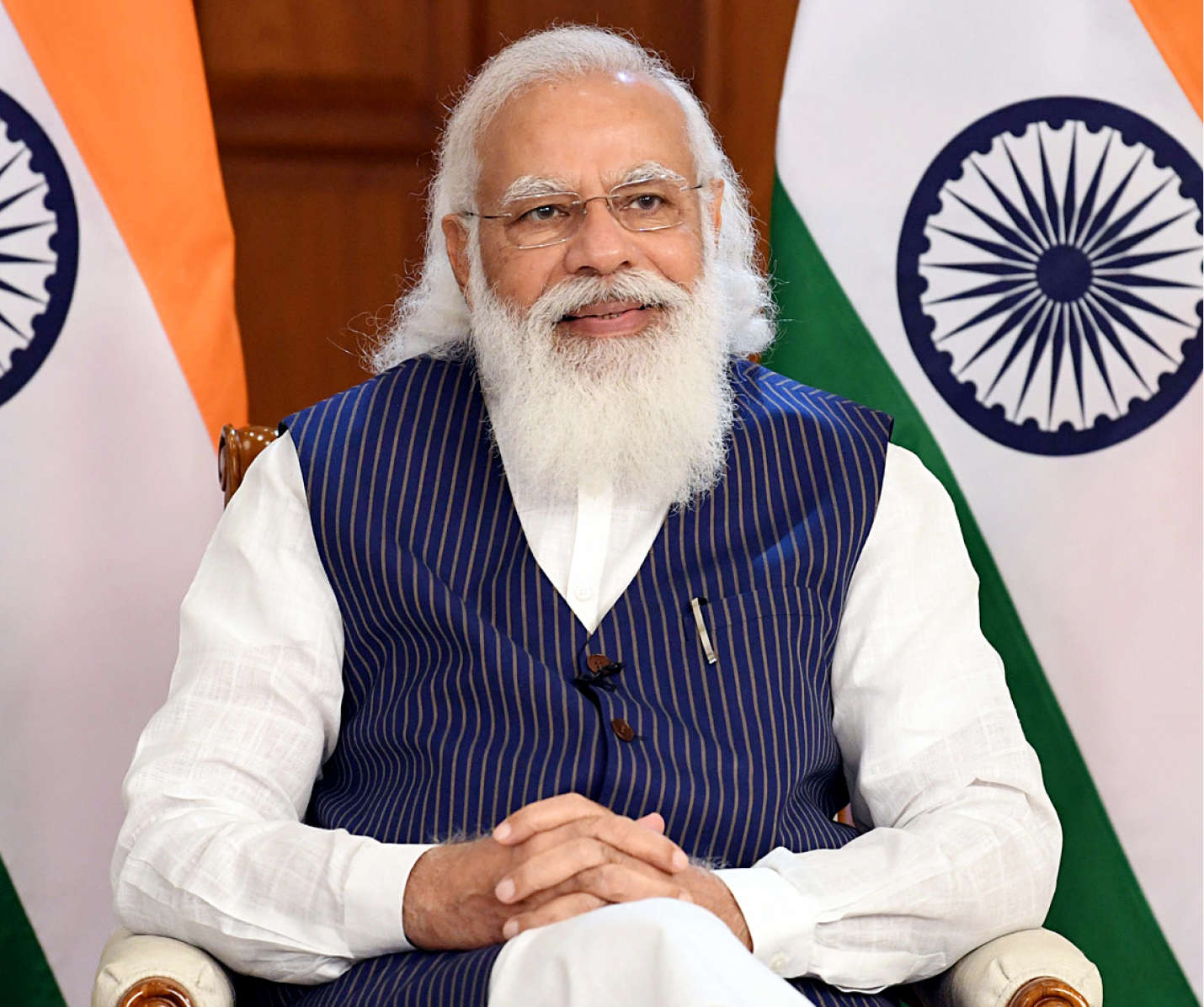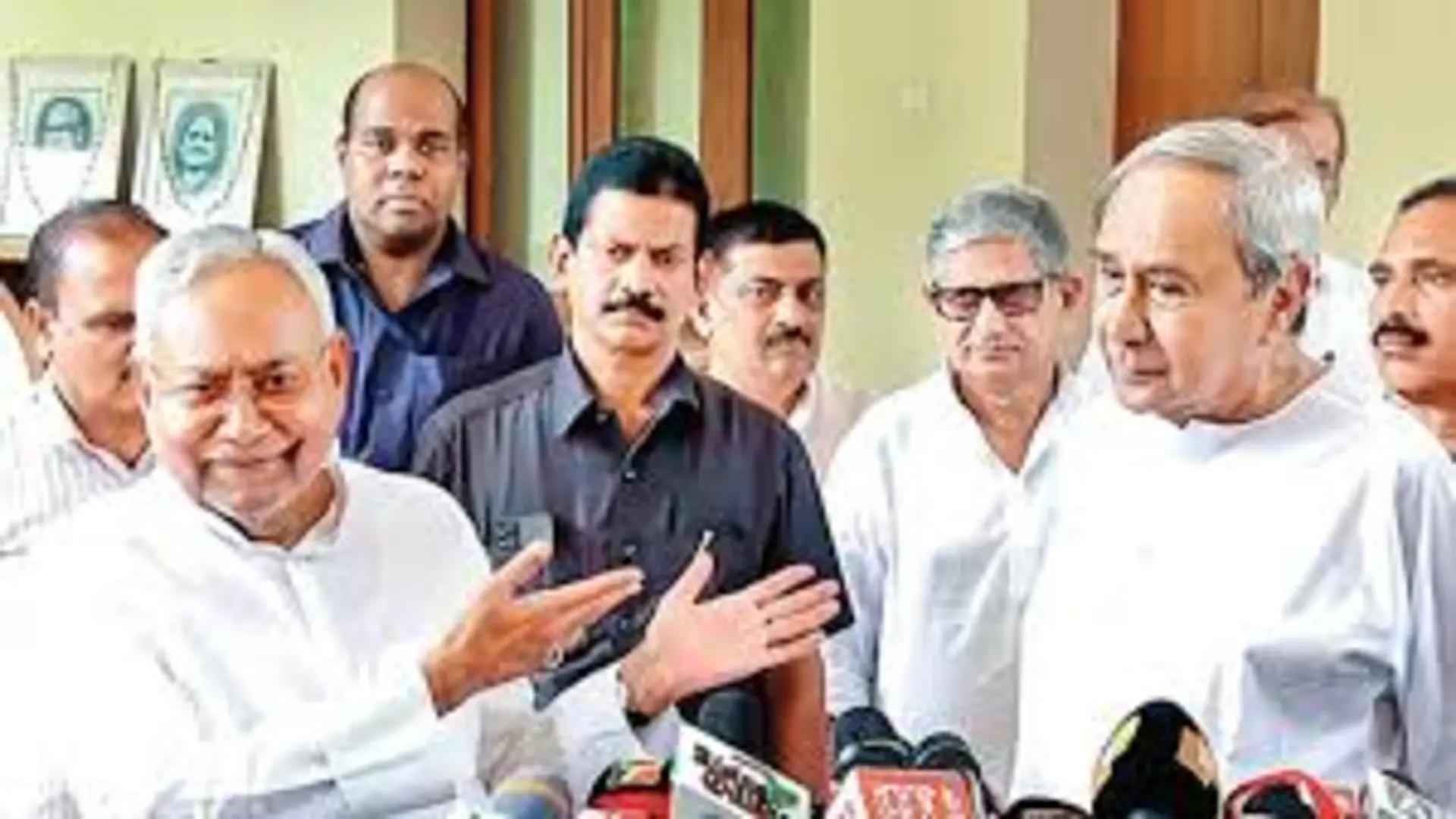The spirit of nationalism along with socio-cultural harmony comprise the essential conditions for the process of nation building. It’s not without reason that Prime Minister Narendra Modi in his last ‘Mann Ki Baat’ program espoused that just like Mahatma Gandhi led the Bharat Chhoro Andolan (Quit India movement), every Indian must lead or be part of a Bharat Jodo Andolan (Unite India Movement). He emphasized on mutual orientation and individual effort towards uniting the nation full of diversities.
The contemporary times for India are fraught with challenges when forces from within the country with the clique of political leaders and intellectuals are hell-bent on dividing India on the lines of caste, sect, region, and language for furthering their vested interests, running contrary to the interests of the Motherland. Thus, there is a need for a Bharat Jodo Andolan today— a concentrated and united effort both at the collective and individual levels for strengthening the national spirit and national unity as well as promoting socio-cultural harmony. The “Bharat JodoAndolan” or the BJA echoes the constitutional principles of ‘unity and integrity of the nation’ and ‘fraternity’ mentioned in the Preamble of the Indian Constitution. Clause (e) of the Fundamental Duties specified in Article 51A of the Constitution specifies that it shall be a duty of every citizen of India to promote harmony and the spirit of brotherhood amongst the people of India. The Unite India Movement or the BJA can be multidimensional— social, cultural, religious, political and economic, and also educational.
On the educational front, for the BJA, an important required change pertains to languages. In a multilingual country like India, where attempts are often made to fan political frenzy particularly in the name of language, a proper language-teaching plan can prove elemental to counter the same. The proposed three-language policy in the National Education Policy (NEP) 2020 can be an important component of this movement if modified slightly. NEP 2020 states that in addition to English, at least two Indian languages will be taught in schools. If the NEP 2020 is followed it will be seen that in most of the non-Hindi speaking states, Hindi as the third language, other than English and the regional language of that state, ordinarily will be adopted, on account of its importance in terms of trade, employment, and nationwide utility. In Hindi-speaking regions, Sanskrit is likely to be taught as the third language instead of any regional language, as has been generally happening.
The current trend, however, is not favourable for achieving the objective of national integration. States like Tamil Nadu etc. will continue having the grudge that Hindi states don’t learn other regional languages. In my opinion, instead of Sanskrit, under the three-language policy, both the Indian languages opted for must be the «modern Indian languages». Resultantly, Hindi will be the first option, as the third language, in non-Hindi states, on the other hand, in Hindi regions any regional language such as Tamil, Telugu, Kannada, Malayalam, Marathi, Gujarati, Bengali, Assamese or Odia etc. will be taught. The Three-language formula of NEP-1968, NEP-1986, also advocated the same. The main reason for not teaching regional languages as the third language in Hindi regions as per the past trends was the lack of teachers for these languages. But in the new system of online education, teaching diverse languages won’t be difficult. The Education Ministry›s website Swayam, Diksha app, and the television channel Swayamprabha can also be incorporated in this regard. This will augment the learning of diverse Indian languages promoting the national spirit and strengthening the timely BJA. The teaching of regional languages in the Hindi region will create bridges diminishing the language divide and take the steam out of petty linguistic politics. As far as learning Sanskrit is concerned, NEP already has a provision of teaching Sanskrit and other classical languages at least for two years in schools.
The academic curriculum is another vital factor that can be tapped for promoting BJA. Unfortunately, under the influence of Macaulay›s divide and rule policy and later Marxist and other western ideologies, such curriculum, texts, and discourses were created which, instead of strengthening the spirit of nationalism and Indianness, constantly eroded the socio-cultural fabric of a united India. A case in point is the presentation of Aryan and Dravida as two separate and conflicting cultures. The same western or west-influenced scholars who designed to break the psycho-cultural unity of Indians propagated that Aryans came from outside India. The British colonial propaganda of this nature was a veiled attack at the core of Hinduism and the historically rooted Indian identity.
It is noteworthy that in Sanskrit ‘Dravida› signified the land of South India. Swami Vivekananda also remarked in one of his speeches delivered in Madras that the Aryans of North India and the Dravidians of South are not two different races, but one and the same, with linguistic differences. Hundreds of examples of this similarity can be traced in Indian culture and literature, for instance, one of the four holy ‘Dhams’ or pilgrimage sites of Hindus, Rameshwaram, located at the far end of Tamil Nadu is in the name of Lord Shri Ram, incarnated in North India. Similarly, other gods and goddesses of the Hindu faith as Vishnu, Lakshmi, Indra etc. are mentioned in the compositions of the great ancient Tamil poet Thiruvalluvar. Even couplets related to Jainism, which emerged in north India again, have been mentioned in the works of Thiruvalluvar. Adi Shankaracharya of Kerala from South India is revered equally in North India. Further corroboration has come from the latest scientific research, wherein Harvard University scholars in a recent DNA study of the skeleton-remains found in Rakhigarhi in Haryana have rejected the previously held claim that Aryans came from outside.
A similar pattern underlines Varna and caste system in various curricula. The caste system with its discriminatory practices including untouchability is indeed a curse on the Hindu faith, which the enlightened practitioners are trying to get rid of, but untouchability was not there since the inception of Hinduism. The four Varnas or levels in the societal hierarchy had flexibility and scope for change based on their virtues and deeds as is seen in the instance of Maharishi Valmiki. Born as a previously discriminated low caste member, Valmiki is revered and worshipped by all. There are more examples of such amalgam of cross barriers as the mother of Maharishi Ved Vyas, the author of all the Puranas, also belonged to the previously what was considered low caste. Matang Rishi›s father was also a member of the ‘Chandal’ caste placed very low in the hierarchy. There are many such examples intentionally left out in courses on caste discourse. Incorporating these important and marginalized narratives will provide impetus to social harmony and the BJA.
The school education curriculum and discourses take note of Joan of Arc of France in early school classes but not the Rani Gaidinliu of North East or Rani Chennamma of Kitturu, Karnataka. Similarly, a deliberate omission is made of the great freedom fighters of the 1857 struggle as Banke Chamar or Gangu Baba of the Bhangi community and revolutionaries of other backward castes. Taking note of these will counter the fragmentary narrative of the past as well as present strengthening the feeling of harmony and nationalism.
The Ek Bharat Shreshtha Bharat Abhiyan started by PM Modi in 2015, can be another effective instrument if implemented properly. This scheme aims to enhance interaction, and promotes mutual understanding among students of different language speaking states/UTs through the concept of states/UTs pairing. The states carry out activities to promote a sustained and structured cultural connect in the areas of language, culture, traditions & music and sports, etc. inculcating a sense of harmony and national spirit.
It was envisioned that the movement would work like a mass movement combining the efforts of the government, citizens, social groups, and private sector towards taking India on the path of progress. However, even a mass movement needs to have a broad blueprint and without a comprehensive calendar and guidelines or action plan, no effort will attain full success.
Another linkage of BJA can be efforts towards linking schools and colleges of remote areas with top educational institutions of the country or states where the top institutions would be encouraged to adopt a few schools and colleges and mentor their students and teachers. NEP 2020 also advocates this line. ‘Vidya Vistaar’ is one such initiative taken by the University of Delhi wherein the University provides its faculties, library, and other educational facilities to twenty-seven partner institutions located in remote areas. This, besides enhancing the quality of these institutions, also helps connect people of far-flung areas with the mainstream.
As the 75th Independence Day approaches it cannot be denied that in the making of New India, PM Modi›s Bharat Jodo Andolan or the Unite India Movement is the need of the hour and the education sector, will have a paramount role to play in bringing about this change.
The author teaches at the Central Department of Hindi, University of Delhi, and has earlier taught in various American universities. The views expressed are personal. He tweets @NiranjankIndia
The contemporary times for India are fraught with challenges when forces from within the country with the clique of political leaders and intellectuals are hell-bent on dividing India on the lines of caste, sect, region, and language for furthering their vested interests, running contrary to the interests of the motherland.













